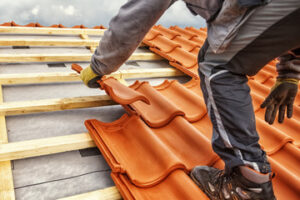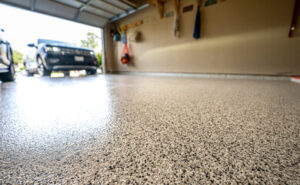A new roof can be a big project. MT Roofing contractor will remove any existing shingles and then install a layer of underlayment to protect the framing and sheathing from moisture.

The roofer will then add flashing around any protrusions through the roof (like chimneys). They will also install gutters and attic ventilation.
Plywood is an excellent choice for roofing construction because it offers great stability and durability. It also resists weather conditions well, which can save homeowners money in the long run. A sturdy roof will protect the interior of your home, increase its value and enhance its appearance. In addition, a strong roof will help to keep your family warm and comfortable.
While many people choose shingles as their roofing material, some opt for another type of sheathing such as plywood. This is a popular option for both residential and commercial roofs. Plywood is made from thin sheets of wood veneers that are cross-laminated and hot-pressed together, forming a dense board. The grain of each layer runs in alternating directions, which helps to reduce the risk of the board swelling or shrinking. It is also designed to withstand moisture and has greater resistance to shear and gravity than dimensional lumber.
When choosing the right plywood for your roof, you should always look for APA-certified wood. The APA stamp includes a number of important figures, including the thickness, span rating, exposure durability classification and the mill number. The key figure is the thickness, as you will want to choose a thick plywood that is strong enough to support your roof. You should also check the span rating to ensure that it matches any existing boards that you are replacing or repairing.
Depending on the climate where you live, your roof may require a specific structural strength or durability. For example, hail-prone regions need a roofing material with exceptional impact resistance, which is often not possible with OSB. In addition, the structural benefits of plywood make it a good choice for steep-slope roofs.
When applying the sheathing, you should begin at the bottom of the roof and work up to the ridge. Use a staggered pattern when building up the plywood, and leave a 2-3 mm gap between each sheet. This will allow for expansion and contraction as the plywood adjusts to changes in the environment. It is also a good idea to use “H” clips to secure the plywood to the trusses. These clips add extra stability and are available in a variety of sizes.
Asphalt shingles
Among the most popular roofing materials, asphalt shingles are affordable and easy to install. They can withstand the elements of Maryland, including hailstorms and snowfalls. They can also resist algae and moss growth, making them a long-lasting and durable option for any home. Additionally, many styles offer a class A fire rating, which is the highest available rating for any roof material.
One of the most significant benefits of asphalt shingles is their variety of color options. They can be used to complement any home design, whether it’s traditional or contemporary. Many homeowners choose to go for a natural shade like earthy browns, but there are many eye-catching options available as well. Some styles are also resistant to algae, moss and mold, which can help to keep your roof looking beautiful for years to come.
These shingles can be installed on any type of roof, including steep pitches. However, you should always consult with a professional before starting a roofing project. They can give you advice on how to prepare the roof for installation and make sure that everything is safe for you to work on. Additionally, you should wear the proper safety equipment while working on your roof, including rubber-soled boots or shoes, gloves and a hard hat.
The most common type of asphalt shingle is the strip shingle, which has a square butt and one or three tabs. It is made of a base mat that is either organic (cellulose fibers) or fiberglass, saturated and coated with asphalt and surfaced with ceramic-coated opaque mineral granules for weatherproofing.
You can also find architectural shingles, which have more layers and a dimensional look than traditional strip shingles. They are often marketed as premium or designer shingles and can be more expensive than standard shingles, but they can provide long-term value with their durability and aesthetics.
You can also choose luxury shingles, which are available in a wide range of styles and colors. They can be used to mimic the appearance of wood and slate, and they are also more energy-efficient than traditional shingles. Luxury shingles tend to have a higher upfront cost than strip or dimensional shingles, but they can save you money in the long run by increasing your energy efficiency.
Metal
When it comes to metal roofs, homeowners have a wide variety of options. Each type has its pluses, such as durability or aesthetic appeal. Many are even energy-efficient and fire-resistant.
One of the most popular types is steel, a highly durable material that’s affordable and available in many different colors and styles. This type of roof is often galvanized, which makes it resistant to rust and corrosion. Steel is also lightweight, which reduces stress on the structure and foundation of a home.
Aluminum is another popular choice, as it offers many of the same advantages as steel but costs less. It resists rust and corrosion, as well as being lightweight, making it easy for homeowners to install themselves. Another benefit is its ability to reflect heat from the sun, which can save homeowners money on their energy bills.
Other types of metal roofing include copper, zinc, and galvalume. Each has its own unique features, and a homeowner should consider the climate in their area, their budget, and what style of house they want to achieve.
Before installing metal panels, a homeowner should carefully take measurements and make sure they have the right amount of material for their roof. A roofing expert will use tools to measure the rise, run, and pitch of the roof, and then calculate how much material is needed.
Once the metal panels are in place, a contractor should fasten them with screws that are spaced evenly across the panel and at each eave and ridge. The screws should be driven in so they seat flat on the sheathing, but not so tight that they create a leaky seal. It’s also important to install gable trim to protect the ends of the roof from rain and snow that might get under the panels or into the siding of a home.
Gaps in a metal roof are not only unsightly, but they’re also the recipe for leaks. If a gap appears, it should be repaired immediately, as any water that gets into the home will likely cause significant damage. If the gap is too large, a new roof may be required.
Tile
If you want a roof that adds value and character to your home, tile is a great option. It’s durable and comes in a variety of styles, colors, and materials. Some are more expensive than others, but each is designed to last for a long time. If you’re looking to install a new tile roof, the first step is to choose the right style for your home. There are several different options, including clay and concrete tiles. These can be flat or barrel-shaped, and they’re easy to work with. Other options include decorative concrete tiles that feature patterns or textures, and slate tiles that are made of natural stone and have been used by ancient civilizations.
Once you’ve decided on a tile roofing style, the next step is to prepare your roof for installation. Start with a layer of underlayment, which creates the first barrier against water leaks. The underlayment is rolled out along the lower edge of the roof and secured in place with nails. If your roof has a steep slope, it may require battens to hold the tiles in place (thin strips of wood that run horizontally to allow the tiles to attach themselves). You can also use clips to anchor them, and some tiles are designed to interlock.
Then, workers will lay the tiles, starting at one side and moving down the length of the roof. They’ll ensure even spacing and proper overlap, which can prevent leaking or structural issues down the line.
Depending on the tile’s design, it might need to be cut to fit tight spots. For example, a chimney can get in the way, and the tiles will need to be trimmed to accommodate it. You might also need to cut tiles around obstructions like skylights or vents.
Once the tiles are in place, they’ll be nailed to the sheathing or, if your roof has battens, to the battens themselves. You might also need to install drip edge flashing and ice and water shield if your area requires it. In most cases, you’ll also need to nail the ridge tiles to the ridge of the roof.



